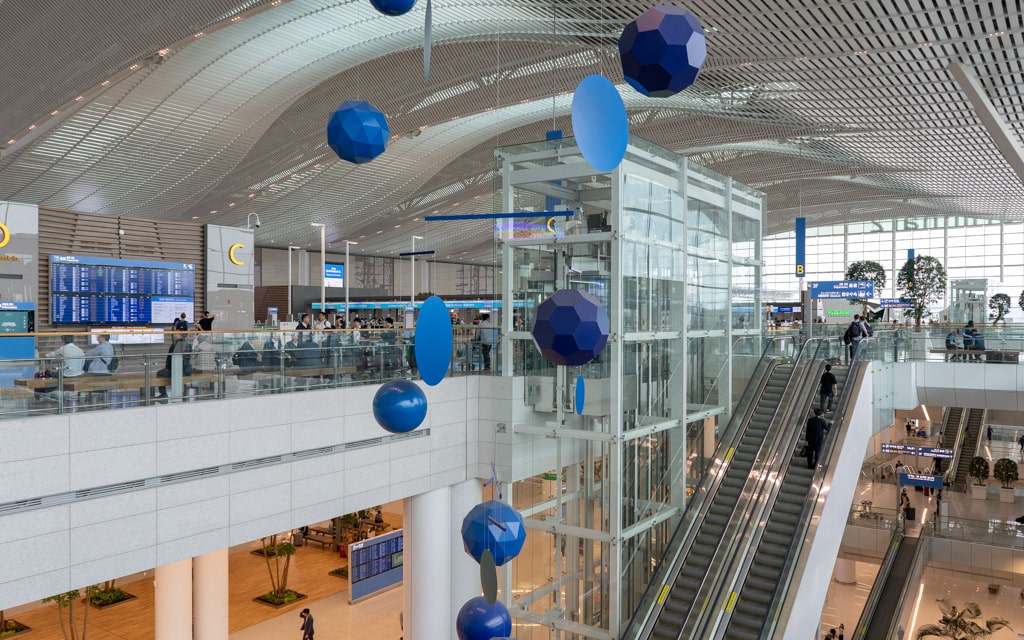
Incheon International Airport (ICN) is Korea’s largest airport and is usually the first stop for visitors arriving in Seoul, South Korea. Located approximately 50 kilometers (31 miles) west of central Seoul, the airport is a major gateway to Korea and the rest of Asia. In 2024, over 70 million passengers traveled through the airport.
Incheon International Airport consistently ranks among the world’s best. Its two modern, spacious terminals combine efficient service and spotless facilities with a wide array of dining options, duty‑free shopping, cultural experiences, and more. You’ll even find hotels, saunas, spa, and a golf course at the airport.
Designed with travelers in mind, the airport ensures smooth arrivals, quick departures, and comfortable layovers for any visitor.
Airport Layout and Terminals
Incheon International Airport consists of two terminals, Terminal 1 and Terminal 2. The airport also has a midfield concourse.
Terminal 1
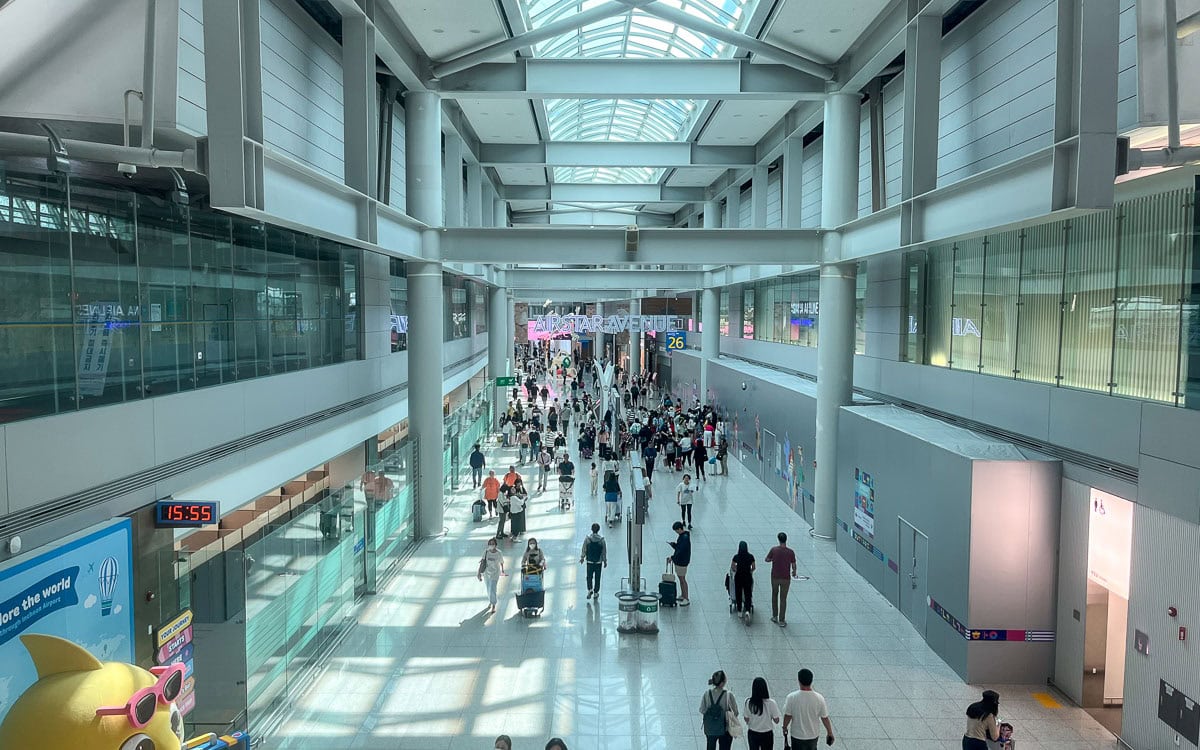
Major airlines operating from Terminal 1 include Asiana Airlines, Lufthansa, All Nippon Airways (ANA), Singapore Airlines, Air China, Air Canada, and other Star Alliance carriers.
Airlines using the midfield concourse, a satellite of Terminal 1, include low-cost and regional operators, including Air Seoul, Jeju Air, and Jin Air.
Terminal 1 features restaurants, duty-free shopping, dining options, transit hotels, and more.
Terminal 2
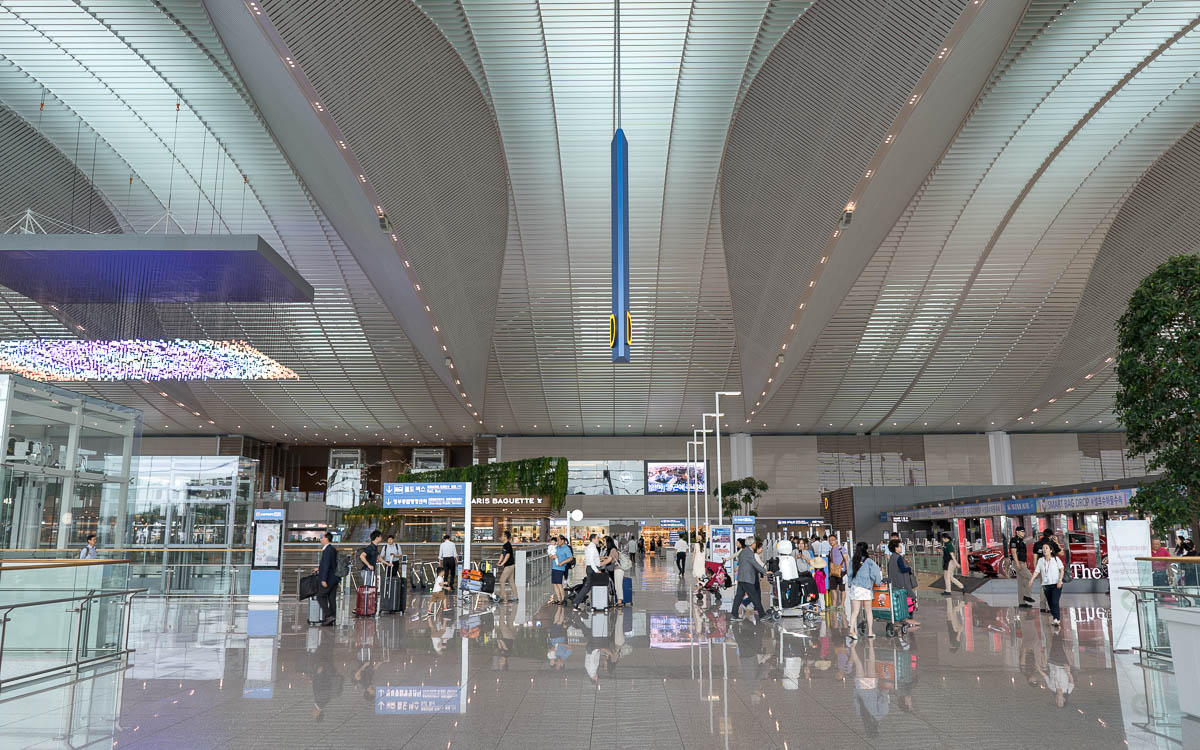
Terminal 2 serves Korean Air, Delta Air Lines, KLM Royal Dutch Airlines, and other members of SkyTeam.
As with Terminal 1, Terminal 2 features shopping, food, lodging, and more.
Transportation Between Terminals
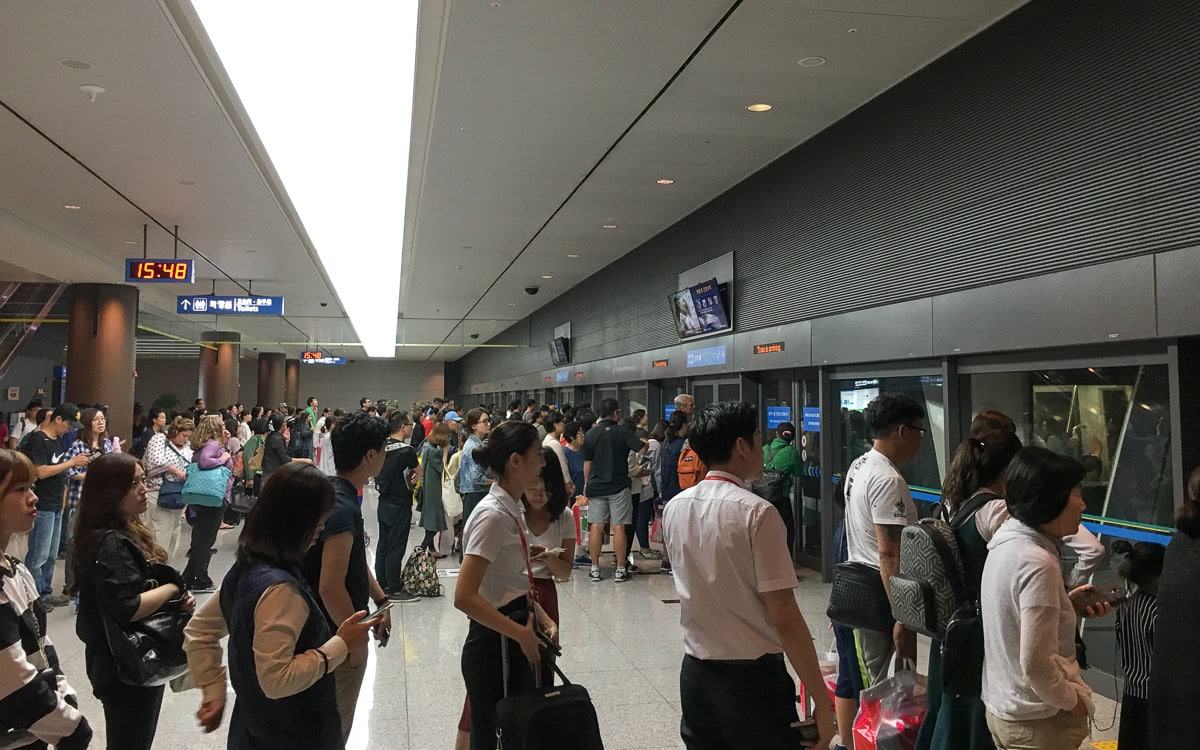
Whether you are departing or transferring, passengers can easily move between the terminals and midfield concourse using the free inter-terminal shuttle train, which departs about every 5 minutes.

Additionally, free shuttle buses connect Terminal 1 and Terminal 2 from outside the secure area. Shuttle bus stops are located outside Exit 7 of Terminal 1 and between Exits 4 and 5 of Terminal 2. Buses run every 5-8 minutes and take about 20 minutes.
Passengers can also use the AREX train to travel between terminals. But, unlike the shuttle and bus, the AREX requires purchasing a ticket and is not free.
Arriving at Incheon International Airport
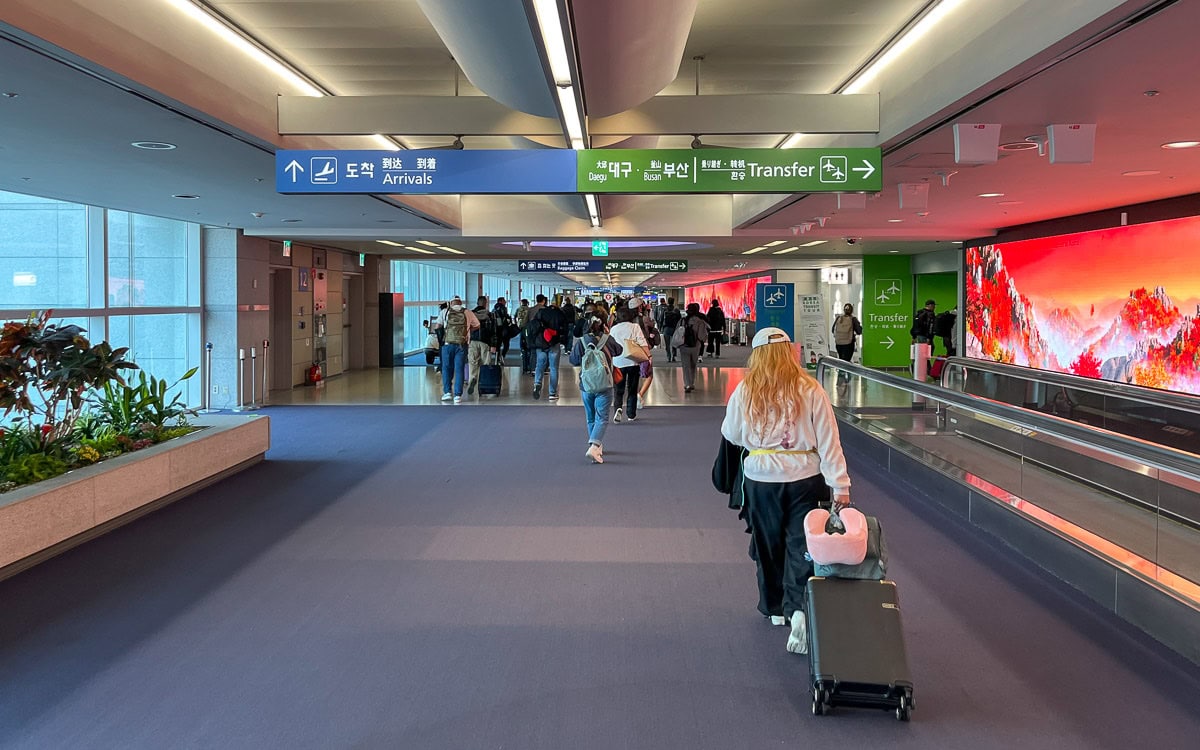
After landing and deplaning, you will follow signs toward arrivals and baggage claim. As one of the best airports in the world, navigating the airport is straightforward. Signs in English, Chinese, Japanese, and Korean will guide you.
Immigration & Customs

All travelers must first clear immigration before entering South Korea. These steps may vary depending on your nationality, visa status, or other circumstances.
As an international visitor, join the line for foreign passport holders. When you reach the front of the line, you will submit fingerprints and facial photographs to the immigration officer before proceeding.
You will also present your passport and, if applicable, your completed arrival card, K-ETA, or visa to the immigration officer.
As travel requirements can change at any time, it’s best to check for any updates before you travel.
Korea Electronic Travel Authorization (K-ETA)
As of 2021, all passengers from visa‑waiver and visa‑free countries must submit a Korea Electronic Travel Authorization (K-ETA) at least 72 hours before departure. Countries that require a visa do not require a K-ETA.
The cost of applying for a K-ETA is 10,000 won (around $7). Once approved, your K-ETA is generally valid for three years and covers multiple entries.
However, until December 31, 2025, citizens of 67 visa‑free countries, including the United States, Canada, Australia, and the United Kingdom, are exempt and can travel to South Korea without a K-ETA.
Most passengers with a valid K-ETA are exempt from submitting an arrival card and can skip the section below. For more information on K-ETA, please visit https://www.k-eta.go.kr/portal/newapply/index.do.
Arrival Card
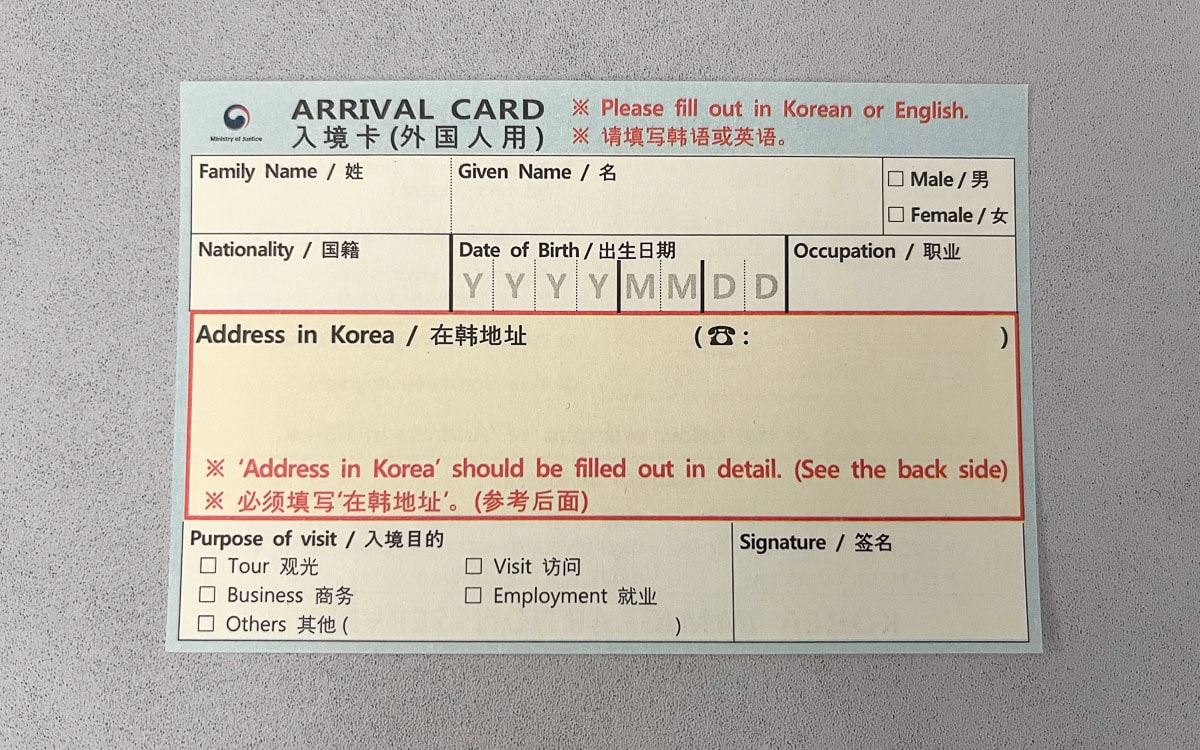
Visitors to South Korea must also complete an arrival card with basic information, including name, nationality, and address in Korea. Flight attendants usually hand out paper arrival cards to passengers onboard before landing.
Visitors can also submit a free e‑Arrival Card online within three days of arrival. For information on the e‑Arrival Card, please visit https://www.e-arrivalcard.go.kr/portal/main/index.do.
By the end of 2025, the Korean government plans to discontinue paper arrival cards in favor of the e‑Arrival Card, which will help streamline the immigration process and reduce wait times.
Immigration Clearance
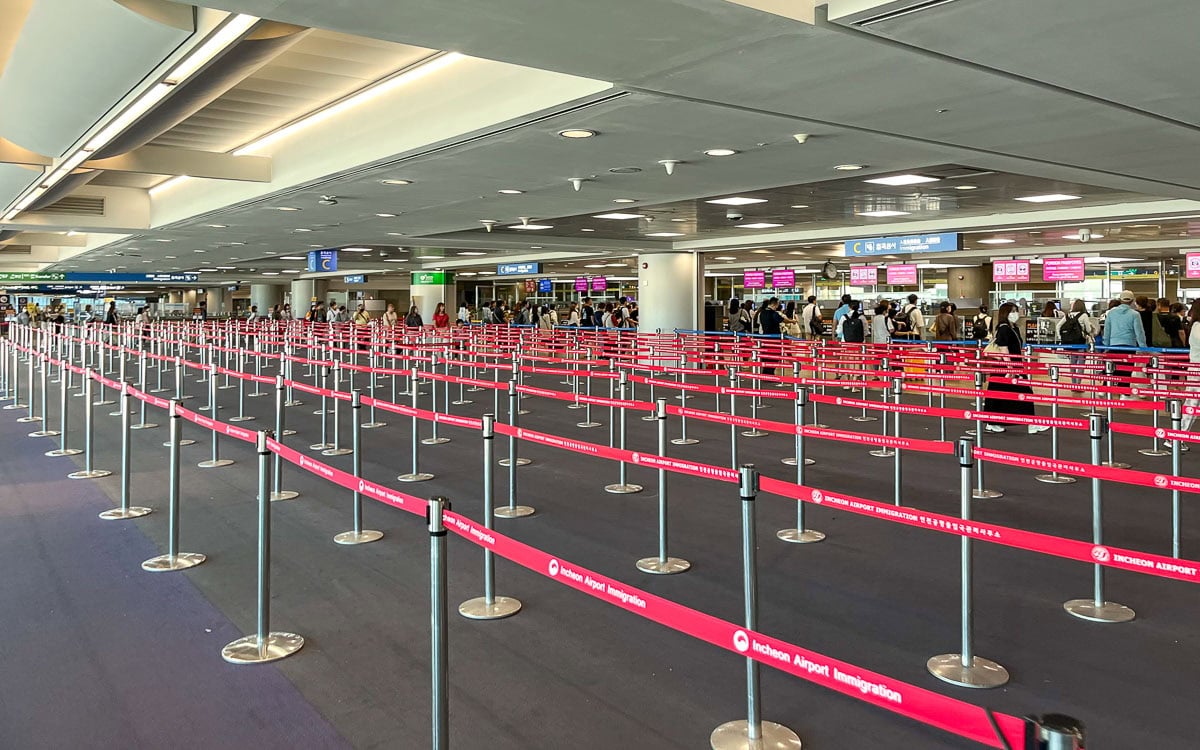
All travelers must clear immigration before entering South Korea. First, join the line for foreign passport holders. When you reach the front of the line, you will present your passport and, if applicable, your visa or completed arrival card to the immigration officer. Those 17 and older will submit fingerprints and facial photographs before proceeding.
Baggage Claim
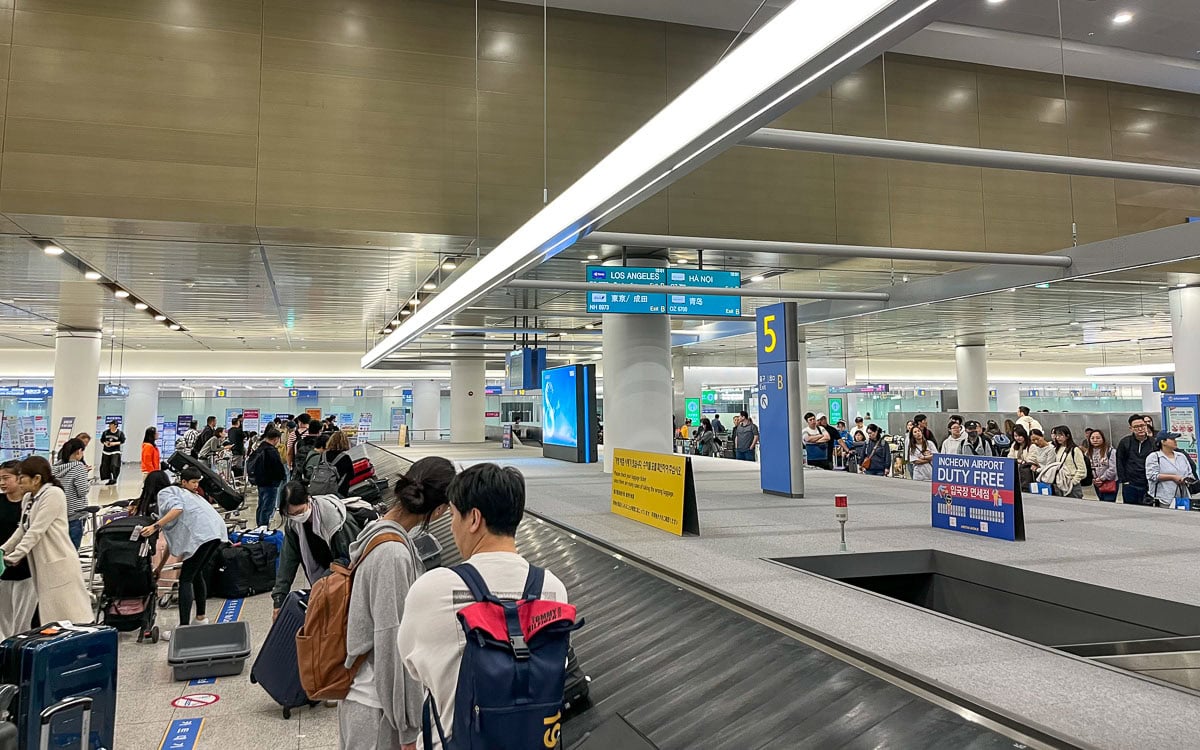
After clearing immigration, it’s time to collect your luggage from the baggage claim area if you have checked in any bags. You can use the electronic displays to find your flight’s baggage carousel.
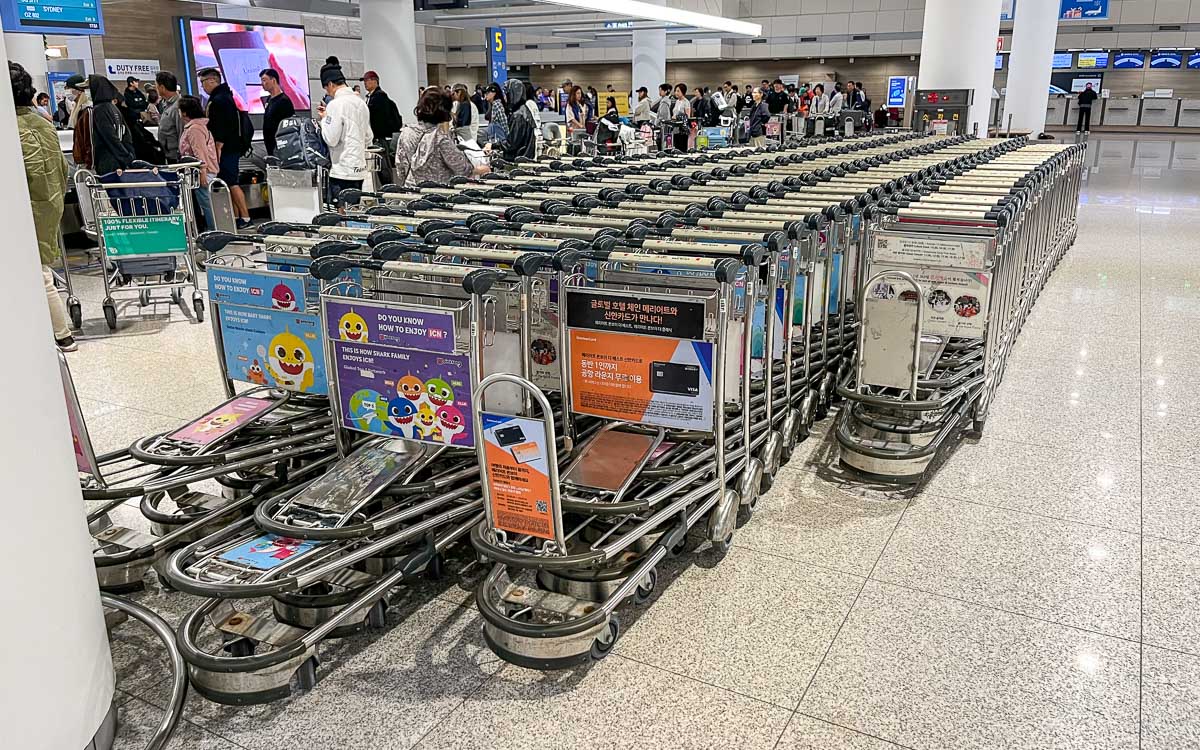
If needed, luggage carts are available free of charge. You will also find baggage service counters in case of lost or damaged luggage.
Customs Declaration

All travelers must also complete a customs or traveler declaration form, even if you have nothing to declare. You can proceed through the “Nothing to Declare” or “Goods to Declare” exits based on your declaration. This is the final step before entering South Korea.
International Arrivals
International arrivals at Incheon International Airport will first have to go through immigration and customs before entering the country. You will be required to show your passport and visa, if you need one. The customs agent will also take your photo and a digital copy of your fingerprints before proceeding. This process is usually quick and hassle free.
Read more about International Arrivals
Transportation Options To Seoul
Airport Railroad (AREX)
Airport Limousine Bus
Airport Taxi
Additional Resources
Viator by TripAdvisor
Viator is a popular online platform that helps travelers book tours, activities, and unique experiences worldwide, including in Seoul. It connects users with a wide selection of options, such as sightseeing tours, cultural events, outdoor adventures, and more, all offered by local providers. Travel easily, with free cancellation and flexible payment options, making Viator an excellent choice for stress-free tour booking.
Book Recommendations
While The Seoul Guide provides plenty of information about traveling to Seoul, sometimes it helps to bring a book with you on your journey. Want to visit Gwangjang Market, hike Bukhansan National Park, visit an ancient palace, or sing karaoke all night long? The book I always recommend is Fodor's Seoul, which provides expert recommendations including sights to see, restaurant reviews, maps, and essential trip-planning information for everything related to Seoul.
Learn more about book recommendations
Rakuten
Save money while exploring Seoul with Rakuten's cashback program. By booking hotels through Rakuten, visitors can earn cashback rewards and enjoy significant savings. Exclusive partnerships and deals make stays in Seoul more affordable, freeing up funds for attractions, dining, and other experiences. I use Rakuten for cashback on all of my hotel stays in Seoul.
If you sign up using the link below, you will get $30 cashback after your first purchase over $30.
Klook
Klook is a reliable online platform offering discounted tickets and reservations for attractions and services in Seoul. It covers theme parks, museums, transportation, WiFi, tours, and more. Travelers can save time and money by booking through Klook's user-friendly interface, with secure transactions and helpful customer support.
If you sign up using the link below, you will get $5 off your first order.
Last Updated on Apr 19, 2025